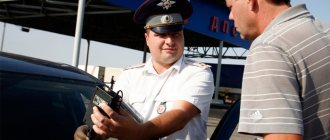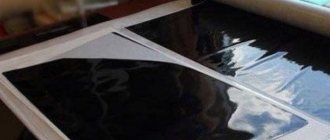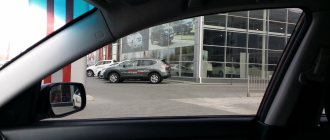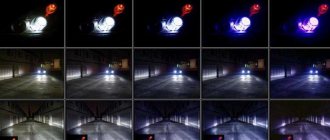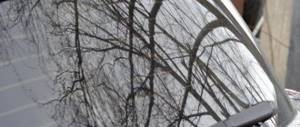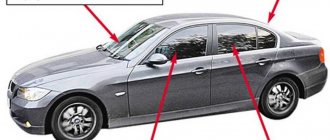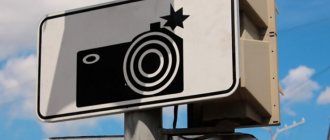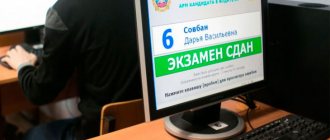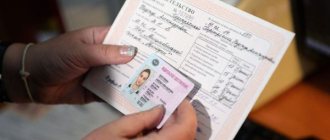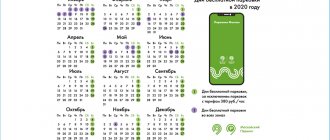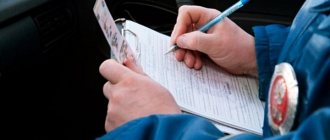Table of contents
- Who has the right to measure
- How is light transmittance measured?
- Norms
- Regulatory acts
- Measurement Rules
- Inspection violations
- Possibilities for canceling the fine
- conclusions
If you decide to darken your car windows, you should know the rules for measuring tint. This will help avoid a fine. In general, there are quite a lot of myths and inaccurate data on this issue. Let's figure out in order who has rights to what, as well as how to avoid problems when meeting with a traffic police inspector.
Persons authorized to check
Any police officer, from a private to a general, can use a taumeter and use its readings to draw up a report.
This condition is stated in the following documents:
- Article 28 3 of the Code of Administrative Offenses of the Russian Federation “Indications of technical means.”
- Art. 28.3 part 1 of the Code of Administrative Offenses of the Russian Federation “Officials authorized to draw up a protocol on an administrative offense.”
Such information is also available on the official website of gibdd, it is presented as follows:
The issue of special ranks for this category is determined in accordance with Art. 26 of the Law “On Police”:
Actions related to measuring the light transmittance of glass are carried out by performing the actions prescribed in the user manual for this technical device.
Who has the right to measure
Contrary to popular belief, any traffic police officer can take measurements. He does not require any additional clearances. It is also allowed to take measurements anywhere.
Rumors that measurements are taken only at stationary points have a basis in reality. The fact is that until recently Order No. 1240 was in force, which indicated that tinting checks could only be carried out at checkpoints or certified technical inspection points. Now this norm has been canceled.
It turns out that the check can be carried out by any traffic police officer, and anywhere on the road. He should not have any additional permits or documents.
What is a taumeter for?
This device is used to measure the tint of windows. Therefore, its main task is to control the degree of tinting of the car. The taumeter is actively used in auto repair shops that provide car window tinting services, as well as in vehicle technical inspection centers and traffic police officers. Inspectors have the right to carry out the procedure for measuring tinting at stationary posts in the absence of a valid technical coupon or in the event that an employee determines a visual violation of the permissible degree of tinting according to GOST 5727-88.
How is light transmittance measured?
For measurements, only certified devices must be used, which must be registered in the Russian register. The following measuring instruments are currently approved.
- Tonic (in register No. 44919-10). Capable of measuring not only neutral-colored glass, but also colored glass. Has a built-in memory of 3 results. You can enter the car number into the protocol. If necessary, you can connect the device to a central server and transfer data directly there. Measures light transmission qualitatively. There are no problems even on thick glass. Battery operated.
- Blik-N (in register No. 35807-07). One of the most common devices. Has a digital display. Calibration occurs automatically. It is possible to measure tint on glass with a thickness of 3–10 mm. There is a limitation on the ambient temperature; measurement is possible in the temperature range from –10°C to +40°C. Has a built-in battery
- Light (in register No. 20761-11). Measures the light transmission of glass with a thickness of 3–6 mm. Designed to test transparency between 1-99%. Can be used at temperatures ranging from –40°C to +40°C.
Important!
All devices have an error of 2%. Therefore, if, when checking the glass, it turns out that it transmits 69% of light rays, the inspector has no reason to issue a fine.
All devices must have a valid certificate. A document confirming a passed state inspection is required. The device must be sealed.
What is a taumeter
A taumeter is a portable device through which the procedure for measuring the light transmittance of glass is carried out. It gives a percentage indicator, the value of which characterizes the same amount of light that freely passes through the car window. The device has a radiation source, as well as a receiver with a measuring unit. A taumeter of any type has the following operating mechanism:
- the car glass is illuminated by the emitter;
- part of the light flux passed through the sample enters the receiver;
- the received radiation is converted, and the measuring unit provides light transmittance readings to a digital display.
Norms
According to current GOSTs, only the tinting of the windshield is standardized; it must transmit at least 70% of the light. There are no light transmission requirements for tinting the side windows. Here is the rear window, if there are no mirrors on the side, it is equal to the windshield, therefore it should not have a surface with a light transmittance of less than 70%
A case from one's life.
The driver damaged his side mirror in the parking lot. I also removed it from the other side, deciding to make do with only the central one before buying new ones. The car was tinted according to the rules. Side and rear 50%, windshield let in 75% of light.
When stopping, the traffic police officer noticed the absence of side mirrors and measured the level of light transmission of the rear window. A fine was issued for violating the tinting rules, but it was not possible to challenge it.
It is also worth considering that mirror and color films are prohibited, the rules prohibit the use of “chameleon”. You can also get a fine for such tinting on a car.
Regulatory acts
Now the traffic rules mention GOST 33997-2016. It is this document that regulates what tint can be used on a car. It states that for a windshield it must transmit at least 70% of light rays. It also indicates what types of tint can be used.
GOST 33997-2016 is fully unified with the Technical Regulations of the Customs Union TR CU 018/2011 “On the safety of wheeled vehicles”. In fact, these are interchangeable documents. It’s just that it’s much more familiar and convenient for traffic police officers to refer to GOST.
It is definitely worth mentioning Order of the Ministry of Internal Affairs No. 664. It was he who allowed us to check the tint anywhere. Until December 2021, inspections were allowed only at traffic police posts. Now this action can be performed anywhere. There is an exception - the permissible places are determined by the local traffic police department, but they leave this item by default, without limiting the actions of inspectors.
The inspection rules are regulated by GOST 27902-88. This document describes in detail the conditions and technical actions when checking a vehicle for the degree of light transmission. Do not be confused by the “antiquity” of this GOST, it has not yet been canceled, and it is unlikely that it will be changed in the near future.
What is the basis for checking the tint?
Before tinting windows, you need to familiarize yourself with the rules and laws. Part 3 of Art. 12.5. The Code of Administrative Offenses of the Russian Federation establishes liability for the use of colored films on front windows and windshields. That is, if films are installed on the glass that do not comply with the regulations, then an offense will be recorded. Although in this case it concerns not only color films, but also any tinting in general.
Clause 4.3. TR CU (technical regulations) 018/2011 establishes a minimum threshold according to which the light transmission of tinting must be at least 70%. This restriction is imposed on the front windows and windshield, which provide the driver with visibility when driving a vehicle.
The same paragraph specifies additional restrictions when using light-protective strips on the top of the glass.
Measurement Rules
Currently, inspectors do not receive special training on how to measure tinting correctly. They usually use the instructions included with the taumeter device. According to these recommendations, they check whether the tinting complies with the standards or not.
First, we will study GOST 27902-88. This is what is written there regarding the conditions for measuring the degree of light transmission of automobile glass.
- The ambient temperature should be 20°C, but a deviation of 5° in one direction or the other is allowed.
- Atmospheric pressure should be between 86–106 kPa.
- Relative air humidity 60%, deviation of 20% in one direction or the other is allowed.
After reading these requirements, you might think that taking tinting measurements on a regular road is almost impossible. But here it is worth paying attention to the tolerances. In fact, it is possible to check the tint under almost any conditions. Although there are some exceptions, we will talk about them at the end of the article. For now, it’s enough to accept it as a rule - there are practically no restrictions on measurements.
Important!
The readings of the device are not affected by the time of day, degree of illumination and precipitation. This is quite logical; the degree of light transmission does not depend on whether it is raining or not.
In practice, tinting is measured by an inspector in accordance with the instructions of the measuring device. Almost all taumeters have approximately the same requirements; only the layout of the device may differ. Let's look at how to check the level of light transmission with the most popular taumeter - "Blik-N".
- Make sure the car engine and ignition are turned off. This will help to avoid interference from the relay regulator; problems may also arise in the high-voltage circuits of the machine.
- Power is connected. If you are using offline mode, turn it on. If from other sources, we connect using the special cord included in the kit.
- When moving from a warm room to the street, you should wait at least 15 minutes before using the device. This will minimize the risk of measurement error.
- We check the heads for freezing and fogging. If such a problem is identified, you need to thoroughly wipe the receiving and transmitting heads.
- We turn on the taumeter and make sure that all indicators are working.
- Before taking measurements, we calibrate the device. Use the pen to set the indicator to 100%.
- Remove the heads and place them on the glass. They are magnetic, that is, they attract each other, you need to bring them to the glass carefully so as not to damage it, especially at low temperatures.
- We shift the transmitting head relative to the receiving one. Let's see in which position the coefficient will be the largest. We multiply this indicator by 100, as a result we get the percentage of light transmission of the tint.
It is recommended to measure at 2-3 points on the glass. This way you can avoid mistakes and random errors. The developers took this point into account; up to 3 checks are stored in the device’s memory.
The inspector must enter vehicle identification information. Usually a license plate number is used, this makes it easier to associate testing and a specific car. The report attached to the protocol will indicate the degree of light transmission, as well as identification data
Sometimes mistakes happen. An employee made a mistake in one digit when entering data. As a result, the court canceled the protocol, considering the obtained measurement results unreliable.
Drivers are often outraged that tinting is measured on dirty glass. In fact, there is nothing criminal here. There are no regulations stating that glass must be perfectly clean. And in fact, dirt on the glass does not greatly affect the level of light transmission. And if your car is so dirty that the taumeter shows a low percentage of light rays passing through, it’s time to wash it.
Models and specifications
The most common devices for measuring glass tint used in Russia are the following types of models:
Video: Tonic. A device for measuring car window tinting.
"Light".
Video: Light. A device for measuring car window tinting.
ISS-1.
All devices are approved by Rosstandart (gost), and information about them is included in the State Register of Measuring Instruments (gosreestrr).
This means that all of them have been tested at state testing centers and are approved for use in the Russian Federation.
In addition, it is mandatory to comply with the following documents, which duplicate the information from the previously presented standards governing the standards for tinting car windows:
In accordance with these standards, as well as the instructions for using the device, its use is carried out. As an approximate introduction to the technical characteristics of measuring instruments used to determine the light transmittance of automobile glass.
Read about adjustable car window tinting here.
You can use the table below. It provides information that relates to the most common type: the Blik-N model.
Table 1. Technical characteristics of the Blik-N taumeter.
Inspection violations
In some cases, inspectors intentionally or through oversight commit various violations. These points should be monitored and then recorded in the protocol.
Be sure to check the certification of the tint checker. If he does not have documents, the research should not be carried out. You don't know where you got it from. Although such a violation is extremely rare. Usually, traffic police crews are supplied not only with equipment, but also with a full set of documents.
Ask to see the device. It must be sealed. Again, if there is no seal, perhaps someone dug into it, and the taumeter can show any data, but not real data. This kind of violation occurs regularly, and not always consciously. Police officers may accidentally touch the seal. But, in any case, you cannot measure tint with such a device.
The inspector makes only one measurement. He can specifically choose a place that, for some reason, has less light transmittance. For example, he will see a small chip. In this case, it turns out that you are a violator. Be sure to require three measurements at different points on the glass.
Some traffic police officers have truly dexterous hands. They manage to place a piece of film under the measuring head. This allows you to get a result that will suit the inspector, but you will not like at all. To avoid this, watch the policeman's hands carefully. If in doubt, ask to see a taumeter to check for fogging or foreign objects.
In some cases, you can be sure of your innocence. Here it is worth asking to repeat the tint check, but in the presence of witnesses. This is not necessary, so the inspector can conduct an inspection without the participation of witnesses. In principle, this is not very important to you either, so there is no need to insist. Although if you are sure that the policeman is violating something, it is better to ask for the participation of witnesses.
It is also a violation to measure at a temperature that differs from the recommended range of 15–25 degrees. But here the inspector violates it out of ignorance; he is guided by the recommendations specified in the instructions for the device. And, there the temperature range is much greater.
A case from one's life
The inspector stopped a car with minor tint. After measurements, it turned out that the glass transmits only 60% of light rays. The driver was not satisfied with this; he demanded a repeat check in front of witnesses.
The inspector stopped the first car he came across. The driver, in the presence of witnesses, asked to wipe the instrument heads and take measurements. This time the taumeter showed light transmittance of 80–85%, which is not a violation.
Possibilities for canceling the fine
It was already mentioned above that there are completely legal ways to cancel the protocol. And they really work. The easiest way is to refer to measurements under inappropriate conditions. To do this, you need to disagree with the protocol when signing. Then he will go to court.
During the court hearing, you must refer to GOST 27902-88. It lists all the environmental parameters under which glass transparency studies should be carried out. In practice, there are very rarely situations where the measurement takes place at a temperature in the range of 15–25°C. This means there is every chance of avoiding a fine. Point out the weather conditions to the judge; the easiest way is to do this in the winter, when there clearly cannot be above-zero temperatures.
But, most often, the protocol does not indicate temperature conditions or humidity indicators at all. In this case, you can also report violations during the inspection. Since the protocol does not contain data on temperature and humidity, the court may well find such a dimming measurement illegal. Quite a lot of such decisions are made throughout the country.
Just don’t talk about temperature and humidity directly to the inspector. He will enter this data into the protocol, and you will lose a significant chance of challenging the protocol.
conclusions
Any traffic police officer has the right to measure tinting, regardless of where the vehicle is stopped. There is no point in hoping that you will not be checked; it is still better to use only film that is acceptable for use.
Measurements must be made under certain conditions, only with a fully functional and certified device. Knowing the rules for checking glass for transparency will help you avoid a fine.
If, nevertheless, the protocol was issued, in many cases it can be appealed. You just have to spend a little time visiting the court. Point out any violations made during measurements, usually this is the absence of the specified temperature, in some cases you can mention the non-compliance of the measurement conditions with the recommended parameters.
Taumeter
The benefits of car tinting are obvious to their owners, both visually and from a practical point of view. There is an approved Technical Regulation on the safety of wheeled vehicles. According to it, drivers are required to adhere to a level of tinting that would fit into the standards for safety glass of land transport according to GOST 5727-88. How is the measurement technique carried out, and what special technical means are used?
